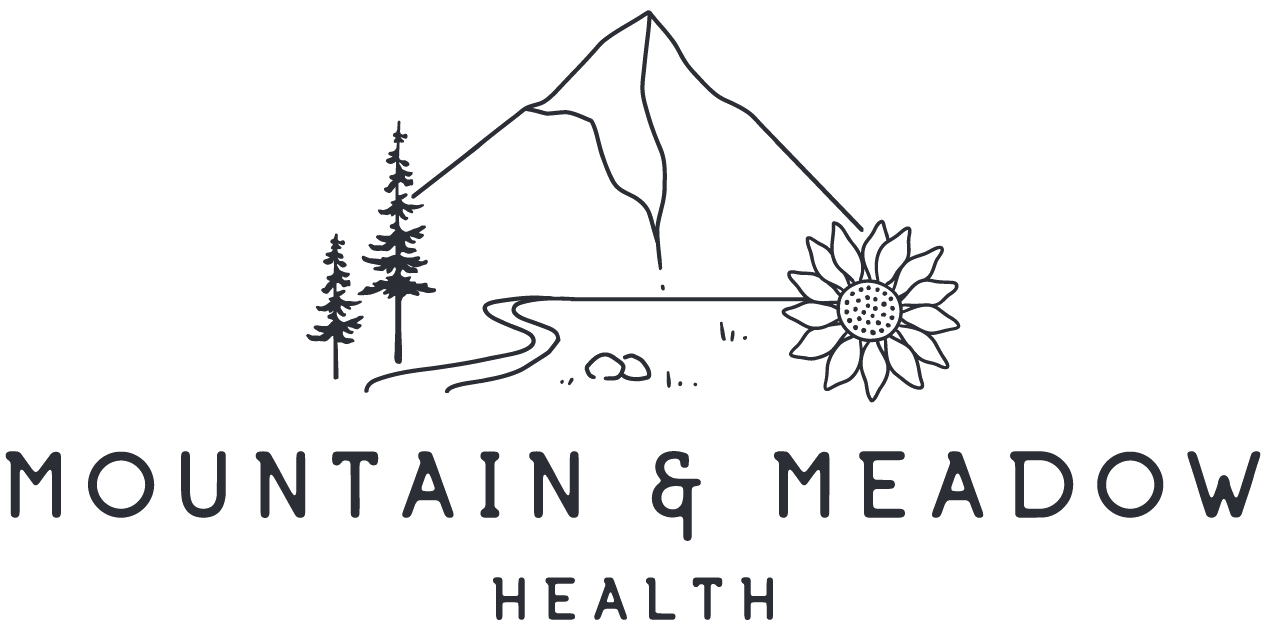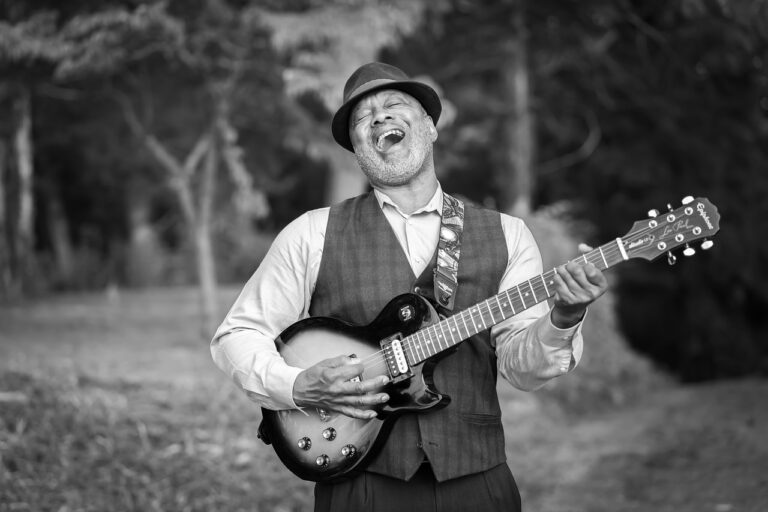This is a high up overview of what I believe are some of the best ways to start really healing.
Disclaimer: Just because I reference a site or a book, does not necessarily mean I endorse all of it or am in agreement with all of the details that site or book contains. Use your own beliefs, brain, and knowledge as you compare it to what you already know you are sure about.
In general, I believe that the longer we have been sick, the earlier in life the damage occurred, the more drugs and medications we have been on, and the more severe the amount of damage we are trying to heal, the longer and more complex the healing process will be. You may find you improve quickly in some areas, but see only very tiny improvements in other areas. It is helpful to think in the terms of months and years for deep healing, not days and weeks. I recommend every 3-6 months reevaluating your progress and trying to be grateful for even the small changes along the way.
In my opinion, I see it as several different tiers of illness. It is not always the case, but I would say that the further down the list we go, the further in complexity and time it takes to get feeling better.
- General day-to-day stresses, anxieties, aches, and pains, nutritional deficiencies
- PTSD and Chronic Illness Syndromes
- Complex PTSD or Developmental Trauma
Keep in mind that if your nervous system is not functioning well and it is in a dysregulated state, you will have to proceed with caution with all that is mentioned below. You may be sensitive or hypersensitive and not able to tolerate any supplementation at this point. You may not be able to make large changes to your diet. You might react negatively to exercise. You might have a very strong reaction to any thing at all. Even the tools and practices designed for helping you to regulate your nervous system may need to be paced very slowly and in much smaller amounts than someone else. Try to be patient and kind throughout this process, as I know it can be extremely frustrating.
I put the Physical System as step two, because it is a more concrete step that you can often see quicker changes and clear test results. If you find that you have tried the Physical System steps and made the changes and seem to be getting nowhere, or that you can’t really tolerate anything in this category, than most likely you have a dysregulated nervous system/emotional system/relational system that will need addressed before you can make deeper progress.
Step One: Logic –Move toward Truth.
The first step in healing is being able to hold two or more opposing viewpoints at one time. You are going to learn things through what I share through this website and from the resources below that are most likely quite different or even opposed to what you currently are holding in your mind to be the “truth.” Can you hold what you currently believe to be the “truth” in place, while also holding in your mind these different ideas that you will learn? Over time, as you gain more evidence for the new ideas, can you reexamine both angles again, and ask yourself, “Which one really carries more weight now? Might I be willing to hold this new idea as a possibility until I dig into it further? Might I even be willing to change my former way of thinking about things? Is it possible I was wrong, or that I was too close-minded in my view?”
This is a skill that we can continue to to develop throughout our life.
A little bit more about holding two opposing thoughts can be found at the following sites.
https://fs.blog/dani-shapiro-still-writing/
“The writing life requires courage, patience, persistence, empathy, openness, and the ability to deal with rejection. It requires the willingness to be alone with oneself. To be gentle with oneself. To look at the world without blinders on. To observe and withstand what one sees. To be disciplined, and at the same time, take risks. To be willing to fail—not just once, but again and again, over the course of a lifetime.”
Step Two: Physical System-Move toward Sufficiency
Improving our health physically would cover the areas of diet and nutrition, mineral and vitamin supplementation, and making healthier lifestyle choices. These choices would cover movement and exercise, sunlight and light, sweating and detox, sleep, and EMFs, to name some of the big ones.
When it comes to the physical system, I recommend starting here on this site
https://nutritiondetective.com/
and with his network on Mighty Networks.
https://nutritiondetective.com/pages/membership
Dr. Smith is the only person I’ve found doing what he does, and cutting through the jungle of lies that are growing everywhere else, including from “professionals” and “experts”.
The steps involved would be:
- Joining his network to get the education and help answering your questions
- Taking an HTMA (Hair Trace Mineral Analysis Test) and some basic bloodwork
- Taking several basic minerals and supplements to balance your minerals and improve your mineral status
- Changing your diet
- Improving your lifestyle
Recommended Reading:
Never Be Sick Again, 2002, Raymond Francis
Dissolving Illusions, 2013, Humphries and Bystrianyk
The Invisible Rainbow, 2020, Arthur Firstenberg
What Really Makes You Ill, 2019, Lester and Parker
Step Three: Nervous System-Move toward Safety
Chronic Illness:
How do we start to heal the nervous system? How do we heal chronic illness such as POTS, ME/CFS, Long Covid,MCAS,etc? We start by understanding our own personal nervous system patterns in relation to polyvagal theory and fight/flight/freeze/fawn. Then we regularly practice regulating our nervous system. There are many different tools and practices that help to balance our nervous system. We want to do two things.
1. Calm and stabilize our nervous system, creating a better balance of parasympathetic vs. sympathetic activity.
2. Increase our capacity and flexibility to be able to move through both calming and activating states, so we can travel up and down in our nervous system and return to a healthy baseline.
In other words, it is great to calm and relax ourselves, and start to turn down the heat of our nervous system. But we can not always be calm, because we have day-to-day stresses and problems that come up. We want to increase our ability to handle these stressors more easily and naturally come back down to a less activated place.
Nervous system practices tend to fall in several different categories. Some of these are:
- Pattern Interrupts
- Vagal Toning with sound, eye exercises, movement, touch-Improving the health and flexibility and balance of our vagus nerve.
- Positive Visualizations
- Orienting and Grounding
- Breath
- Touch
- Somatic Movement-Slow Focused Movement
- TRE
- Kidney/Adrenal/Brainstem Focusing
- Accupressure Tapping-Such as EFT or Faster EFT
- Havening
- Locating positive resources in our life and changing our lifestyle.
Going beyond just a simple breath pattern routine, I recommend you check out how to restore proper breathing here:
Courses I have joined recommend learning these nervous system regulation practices and practicing them every day or as many days as possible throughout the week. Any amount of time practicing is helpful, but it seems that about an hour to an hour and a half per day is best. I like to think in blocks of 15 minutes. So shoot for 15 minutes a day up to 1 hour and a half per day. If you are very sensitive right now and can only tolerate a few minutes at a time, then start slow and build up over the upcoming days and weeks.
It might be best to learn any of the practices that tend to be more activating, such as TRE and more intense breathwork , after you have built a foundation of the other gentler practices first.
I recommend taking a course or working with a coach to learn these practices. There are a variety of different options out there. They range in price from about $50-$100 per month for a membership to several hundred dollars, to as high as several thousand dollars. I would recommend a course or program that teaches you most or all of the above techniques, since they are all helpful, and some may really help you a lot more than the others.
I only have experience with Irene Lyon’s programs, Primal Trust, and DNRS. Of the three I would definitely choose Primal Trust. Level 1 of their membership helps educate you and gives you tools to work on the nervous system regulation pieces here, and Level 2 of their membership gets deeper into the trauma pieces-the Emotional/Relational/Core Self as talked about below. Keep in mind I am not in agreement with all that is shared there. You may have to skip or modify practices if they go against your beliefs or seem too strange and New Age-y for you.
This Somia International also looks to be a good program. It seems that it also works with both the nervous system and trauma pieces.
https://somiainternational.com/
Comparisons can be found on these sites:
https://healwithliz.com/programs-guide/
You can also find comparisons of many of the programs can by joining the group here and going to the top under featured.
https://www.facebook.com/groups/1343567669676284
Step Four: Emotional, Relational, Addiction, Core Self-Move toward connection and love.
As we continue healing we can keep learning and uncovering the layers of our Core Self. Who am I really at my core?
- What do I love?
- What do I hate?
- What do I value?
- What are my needs?
- What are my desires?
- What are my dreams and hopes?
- What are my goals?
- What are my priorities in life?
As we move deeper we get into the PTSD and CPTSD categories.
As we increase the calm, stability, and flexibility of our nervous system, and become better resourced, the natural result is often that our old “baggage”, our stuck traumas and stresses will start to come up and want our attention. If possible, I would recommend that you work with a professional here, or a coach or guide at the least, if not doing so already, especially if you have PTSD or CPTSD or find that you lean toward the sensitive or hypersensitive side of the spectrum.
“We are wounded in relationship and we heal in relationship.”
PTSD:
For PTSD, I would recommend working with someone who is trained in body-based trainings or somatic therapy, such as SE (somatic experiencing) or something similar. There are various kinds of Somatic Therapy modalities you can learn about here.
https://www.liberationhealingseattle.com/trauma-therapy-modalities
Somatic Experiencing Site: https://traumahealing.org
Most of the Nervous System Regulation practices above should be helpful for PTSD. Some find TRE helpful for PTSD as well.
CPTSD:
As we go even further we get into CPTSD and attachment trauma/developmental trauma. The idea is that over time you can build what is called an “earned secure attachment” to replace your current “insecure attachment” style.
https://attachmentproject.com/blog/earned-secure-attachment/
You may find modalities that focus more strongly on attachment, boundaries, safety, attunement, presence, and touch, such as Neuroaffective Touch, NARM, DARe, or something similar to be the most helpful here. You can also add them as complements to the other work that you are doing above. NARM and Neuroaffective touch sound great, but it may be difficult to find someone in your area or that is affordable or available.
https://neuroaffectivetouch.com
Also, for a free and very helpful option, a co-counseling relationship such as in The Peak Living Network, or something similar, may be beneficial. I have found co-counseling to be helpful in improving boundaries, attunement, and in giving me a place to speak what I need or want in a relationship. It is also a start in being able to share my stories in a non-judgmental place and practice feeling and expressing emotions with another person witnessing me.
https://peaklivingnetwork.org/
Some really enjoy and find benefit in this method called Honest Sharing here:
https://www.traumaheilung.net/en/
Healing toxic shame seems to be very complex and touchy as well. I am finding the co-counseling structure of the Peak Living Network a start to working through this sense of shutdown and contraction. I also recommend the Center for Healing Shame and it’s articles, courses, and practitioners here.
In my research, so far I have found the principles of NARM, Neuroaffective Touch, The Center for Healing Shame, The Peak Living Network Co-Counseling, and Pete Walker’s book to be the most helpful and/or to have the deepest level of understanding.
https://www.pete-walker.com/index.htm
Authentic Relating looks very good as well.
Recommended Reading:
Waking the Tiger, 1997, Peter Levine
Complex PTSD: From Surviving to Thriving, 2013, Pete Walker
Healing Developmental Trauma: How Early Trauma Affects Self-Regulation, Self-Image, and the Capacity for Relationship, 2012, Heller and LaPierre
Nurturing Resilience, 2018, Kain and Terrell
Embracing Shame, 2023, Lyon and Rubin
Authentic Relating: A Guide to Rich, Meaningful, Nourishing Relationships, 2022, Ryel Kestano
Step Five: Addiction-Continue Repairing All Other Systems-Move toward connection and love.
I don’t have a lot to say about addiction for this article, other than that I believe that as we fill our healthy biological and fundamental needs in our life, improve our physical health, and repair our nervous system and trauma patterns, our addiction will naturally improve on it’s own. Addiction is just a symptom from the disconnection, trauma wounds, nervous system dysregulation, lifestyle choices, poor liver health, and other factors that are feeding it.
https://usabp.org/Viewpoint-Articles/12841182
Step Six: Lifestyle-Move toward sufficiency and simplicity
I don’t have a ton to say about Lifestyle at the moment. However I think that there are some helpful principles to be found from The Minimalists and from The Bullet Journalist and similar sites like theirs on productivity, planning, minimalism, simplifying, etc.
https://bulletjournal.com/blogs/bulletjournalist
https://www.theminimalists.com/
Step Seven: Spiritual-Move toward truth, love, sufficiency, connection, love.
If we are really able to look at things with an open mind, and hold two opposing views in our awareness at once, then we need to at some point think more deeply about the spiritual part of the world. Attachment theory teaches us the importance of healthy attachment with another being. It helps prove how we were built or wired for connection and attachment with others, most importantly our parents when growing up. Our father and mother.
Ask yourself: How did this attachment bond come to be placed inside each one of us as a need? Who put it there?
When given the chance to learn about the possibility of a creator, a Father figure for all of us, many of the same people that talk about the importance of healthy attachment, these “leaders” of their field, are quick to deny the existence of anything beyond us. “No, there is no God. We evolved. Just by random chance.” They say. Or if they talk of a God or a being, most times it is in a vague way. That there is this great field, this superconsciousness that we are all part of. There is no personal God. He does not have a personality. He is not a Father or someone with traits like us. It is just this field of loving energy that we can all connect with if we go deep enough.
These are two opposing views: we either came from random chance in the universe, or we were intelligently designed. We either were created by a personal being with traits and a personality, or we are just part of a mystical, non-personal energetic field.
If we evolved by random chance from other organisms, is there really proof of this happening? What is the probability that this could happen? Does observable creation and the laws of nature and the universe harmonize with theories of chance and evolution?
On the other hand, if we were intelligently designed, what were we designed for? What is our purpose?
Further questions could arise after diving into these topics more deeply:
- Why are we here?
- What is the purpose of life?
- Where is the future heading?
- Why is there so much suffering and pain in the world?
- If people want love and happiness, why is there so much violence and greed and evil in the world? Where does it come from?
- Is there a true holy book today?
- Should I join a religion?
- Is spiritual truth something that can even be found today?
- Shouldn’t a religion or holy book help its followers to be better people today? Why are there so many bad things done in the name of religion and spirituality?
Added: I encourage you to start exploring these questions. In my opinion, they are the most important ones to be answered.
When it comes to spirituality, I have found no other group doing what they do in the link below . They are always moving toward what is true and what is loving, genuinely working toward unity no matter the nation, tribe, culture, background, or language.







